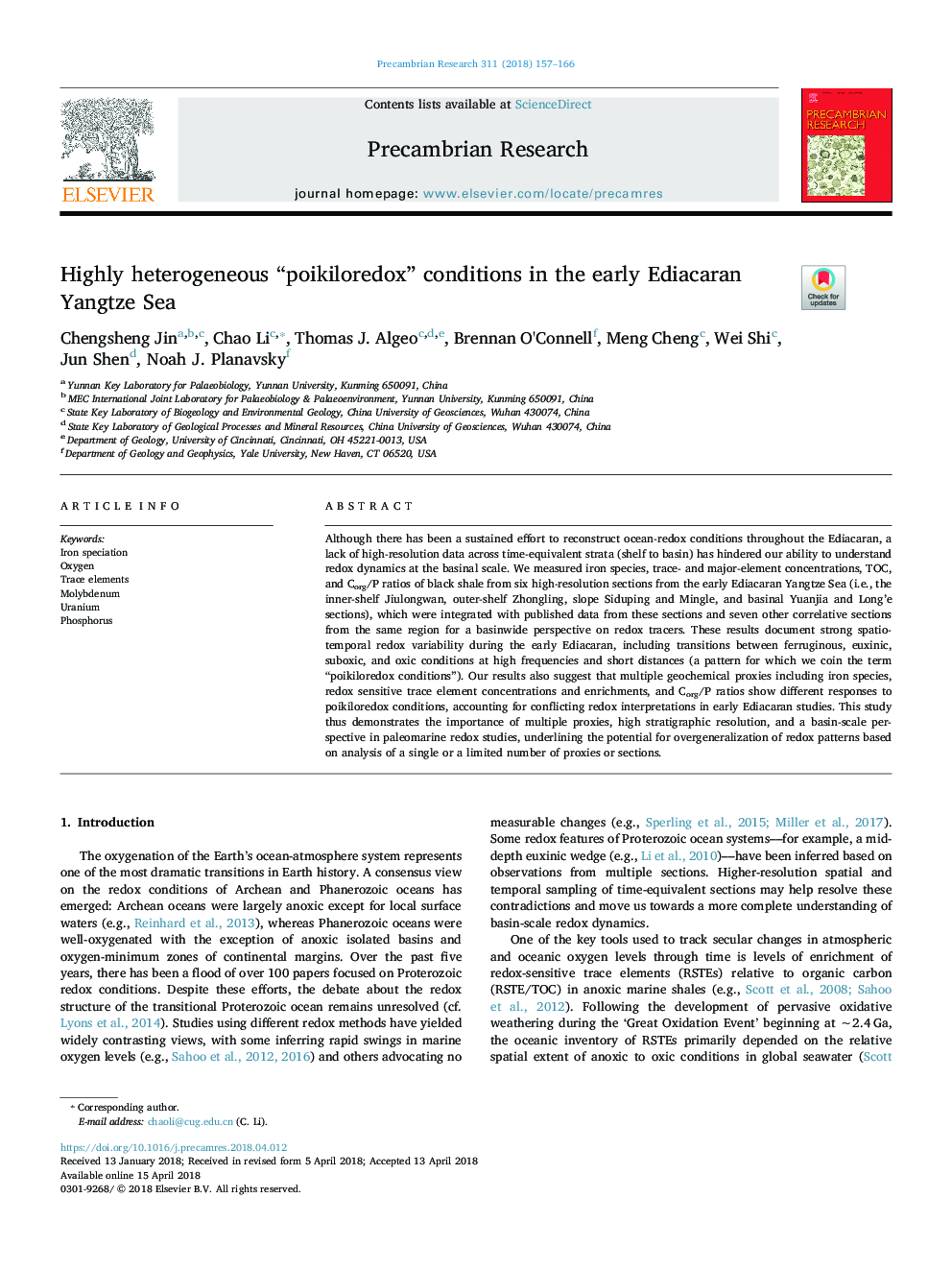| Article ID | Journal | Published Year | Pages | File Type |
|---|---|---|---|---|
| 8912552 | Precambrian Research | 2018 | 10 Pages |
Abstract
Although there has been a sustained effort to reconstruct ocean-redox conditions throughout the Ediacaran, a lack of high-resolution data across time-equivalent strata (shelf to basin) has hindered our ability to understand redox dynamics at the basinal scale. We measured iron species, trace- and major-element concentrations, TOC, and Corg/P ratios of black shale from six high-resolution sections from the early Ediacaran Yangtze Sea (i.e., the inner-shelf Jiulongwan, outer-shelf Zhongling, slope Siduping and Mingle, and basinal Yuanjia and Long'e sections), which were integrated with published data from these sections and seven other correlative sections from the same region for a basinwide perspective on redox tracers. These results document strong spatiotemporal redox variability during the early Ediacaran, including transitions between ferruginous, euxinic, suboxic, and oxic conditions at high frequencies and short distances (a pattern for which we coin the term “poikiloredox conditions”). Our results also suggest that multiple geochemical proxies including iron species, redox sensitive trace element concentrations and enrichments, and Corg/P ratios show different responses to poikiloredox conditions, accounting for conflicting redox interpretations in early Ediacaran studies. This study thus demonstrates the importance of multiple proxies, high stratigraphic resolution, and a basin-scale perspective in paleomarine redox studies, underlining the potential for overgeneralization of redox patterns based on analysis of a single or a limited number of proxies or sections.
Related Topics
Physical Sciences and Engineering
Earth and Planetary Sciences
Geochemistry and Petrology
Authors
Chengsheng Jin, Chao Li, Thomas J. Algeo, Brennan O'Connell, Meng Cheng, Wei Shi, Jun Shen, Noah J. Planavsky,
